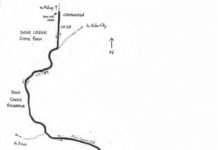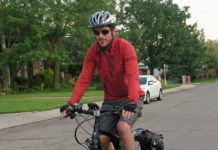By Charles Pekow –
If you’re in a bicycle accident at night, you’re more likely to get killed than you are in a daytime crash. And while most bike crashes occur on urban roads, the ones on rural ones result in a greater chance of a fatality. At least these facts describe the case in Florida.
 Because of a high concentration of bicycle fatalities, the Florida Department of Transportation decided it needed detailed information about bicycle safety. So it hired Florida International University in Miami to prepare a complete study of bicycle crashes in the state. Researchers examined all 23,036 known bike accidents in the state between 2011 and 2014. They identified the five “hot spots” in the state where crashes are more likely to occur and examined reams of other data that show where to focus safety efforts. Cyclists over 64, for instance, were more likely to die in a crash than younger ones. And males were more likely to die than females. Many were under the influence of alcohol or drugs when mortally wounded or killed on bike.
Because of a high concentration of bicycle fatalities, the Florida Department of Transportation decided it needed detailed information about bicycle safety. So it hired Florida International University in Miami to prepare a complete study of bicycle crashes in the state. Researchers examined all 23,036 known bike accidents in the state between 2011 and 2014. They identified the five “hot spots” in the state where crashes are more likely to occur and examined reams of other data that show where to focus safety efforts. Cyclists over 64, for instance, were more likely to die in a crash than younger ones. And males were more likely to die than females. Many were under the influence of alcohol or drugs when mortally wounded or killed on bike.
While sidewalk cyclists got their share of getting hit, they were much less rarely killed than those riding on the street.
A few other factoids the Florida study found: Helmets proved a better safety tool than lights or reflective clothing or lights. The most common mistake cyclists made involved failing to yield. Making U-turns and riding against traffic also resulted in many self-caused wounds. Other big hazards: unusual intersection design, driveways too close to intersections, and dooring.
At least Florida found the issue of bicycle safety important enough to take on and tackle with a comprehensive report that can serve as a guide for making cycling safer. Now with the precedent, maybe some other states can follow suit.
Find the Statewide Analysis of Bike Crashes at https://www.fdot.gov/docs/default-source/content-docs/research/Completed-Proj/Summary-SF/FDOT-BDV29-977-23-rpt.pdf













found the link: https://fdotwww.blob.core.windows.net/sitefinity/docs/default-source/research/reports/fdot-bdv29-977-23-rpt.pdf?sfvrsn=e502794f_2
Comments are closed.